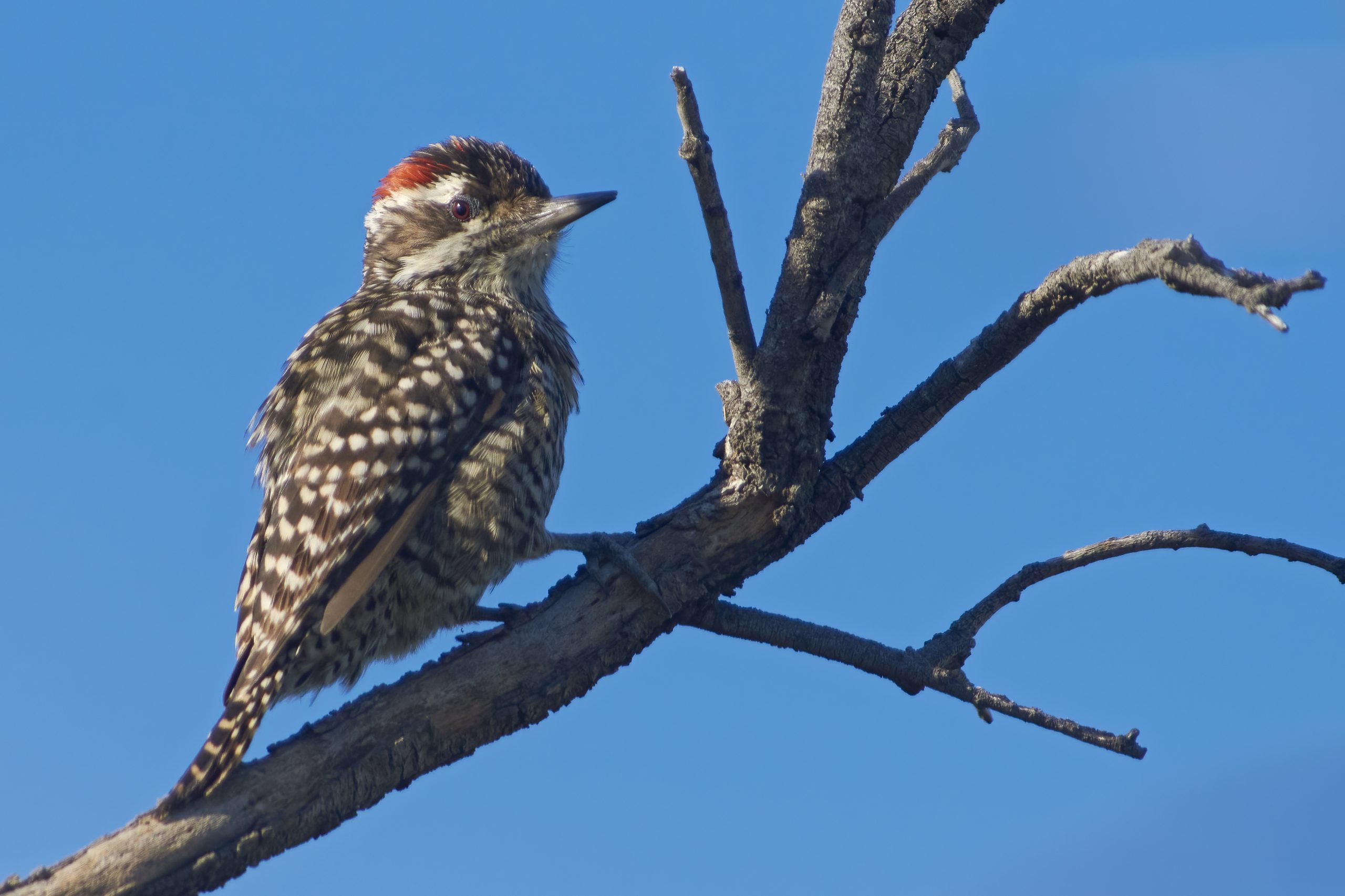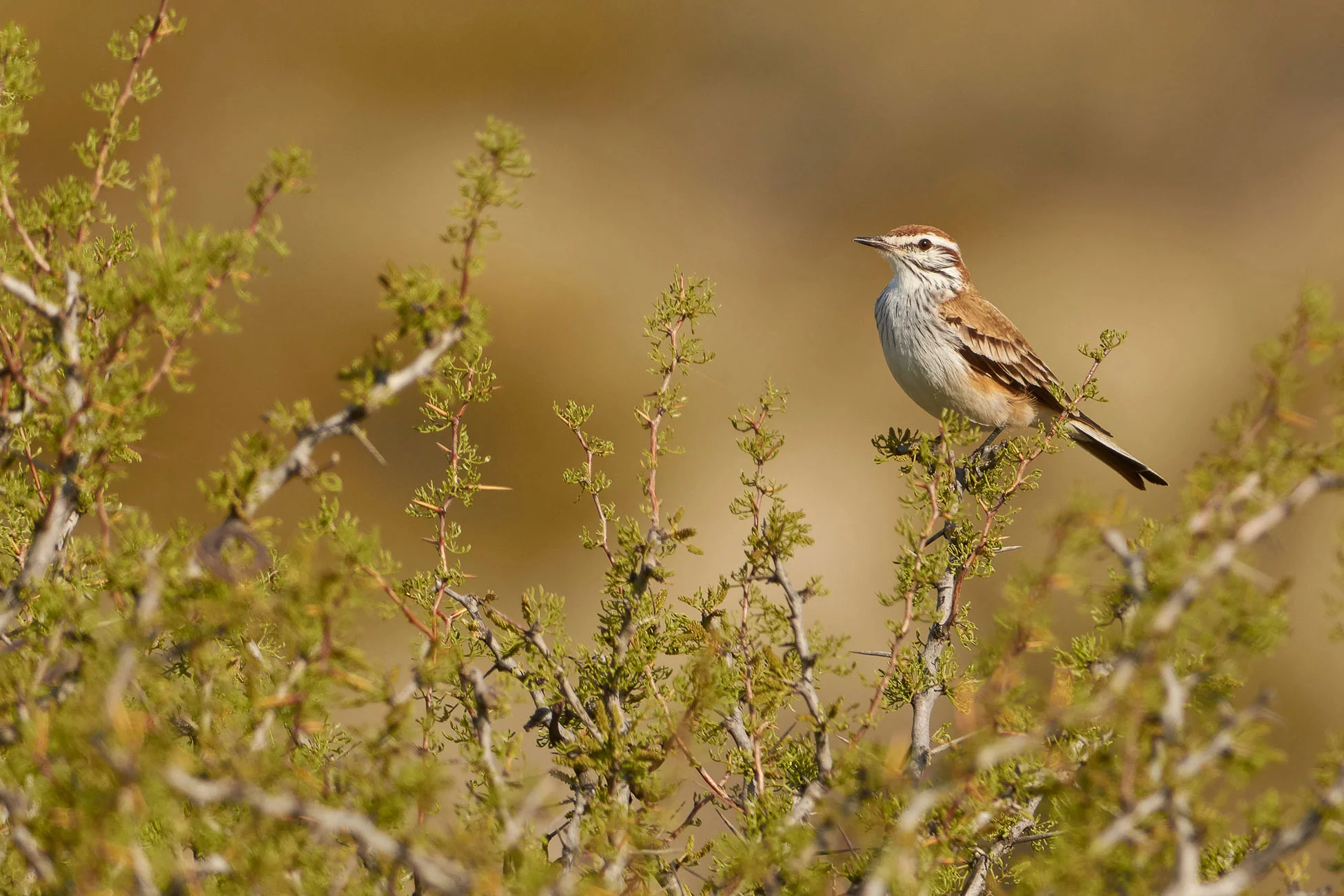Order: Piciformes
Family: Picidae
The Checkered Woodpecker is a small, striking bird native to southern South America, including Patagonia. It is easily recognized by its bold black-and-white checkered back and barred flanks. Males have a small red patch on the nape, while females lack this marking. This species is highly adaptable, inhabiting a range of wooded environments from dry forests and shrublands to urban parks and gardens. Its drumming and sharp calls are often heard before the bird is seen. The Checkered Woodpecker uses its strong bill to probe bark and branches for insects, larvae, and spiders, and it sometimes supplements its diet with seeds. Agile and active, it moves quickly along trunks and branches, often hanging upside down to reach food. Its nesting habits are typical of woodpeckers, excavating cavities in dead wood where it raises its young. The species is not considered threatened and is fairly common throughout its range.
Habitat
Open woodlands, dry forests, shrublands, and urban parks across Patagonia and southern South America.
Foraging
Feeds mainly on insects and larvae found in bark, often foraging in pairs or small groups on tree trunks and branches.



